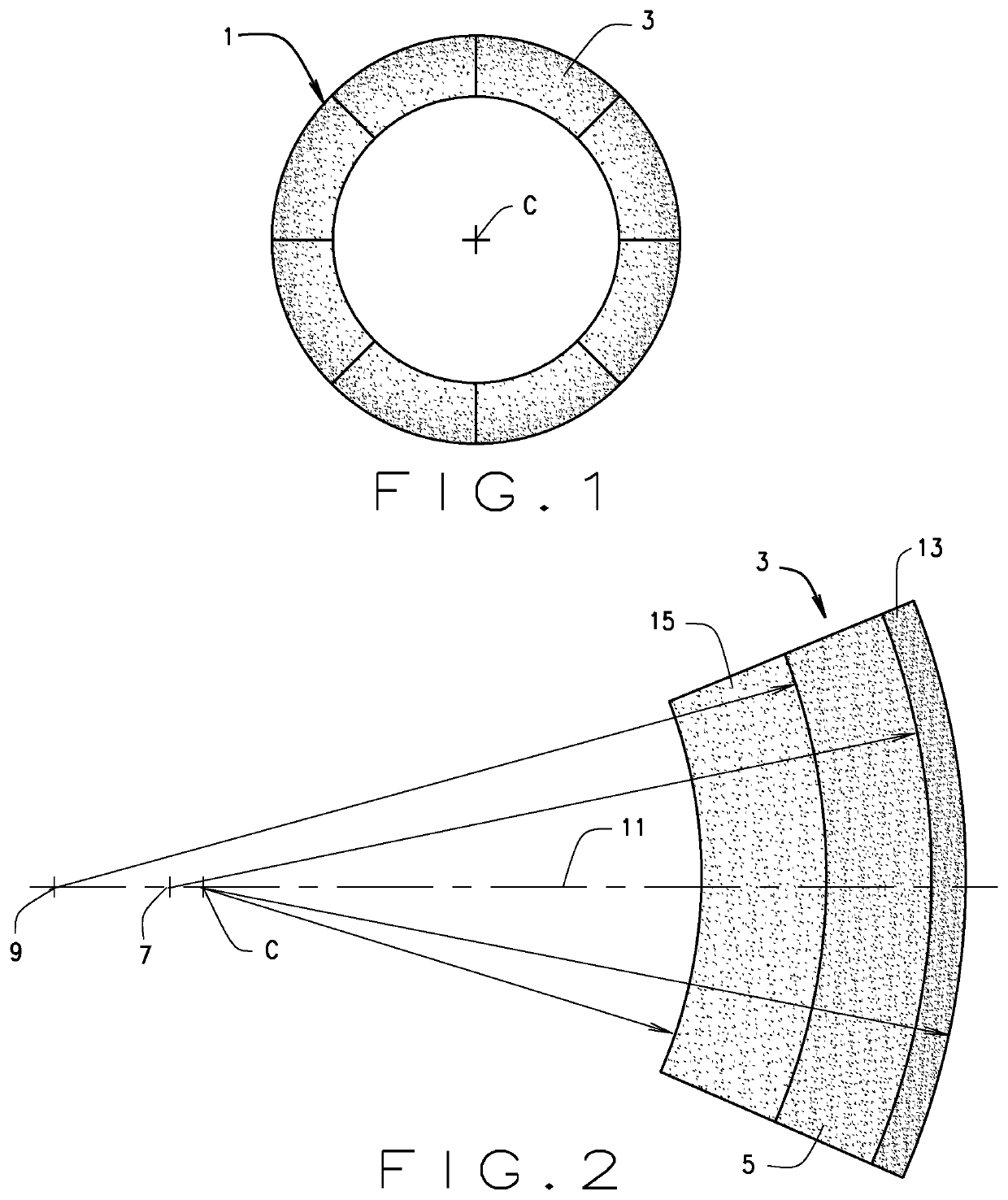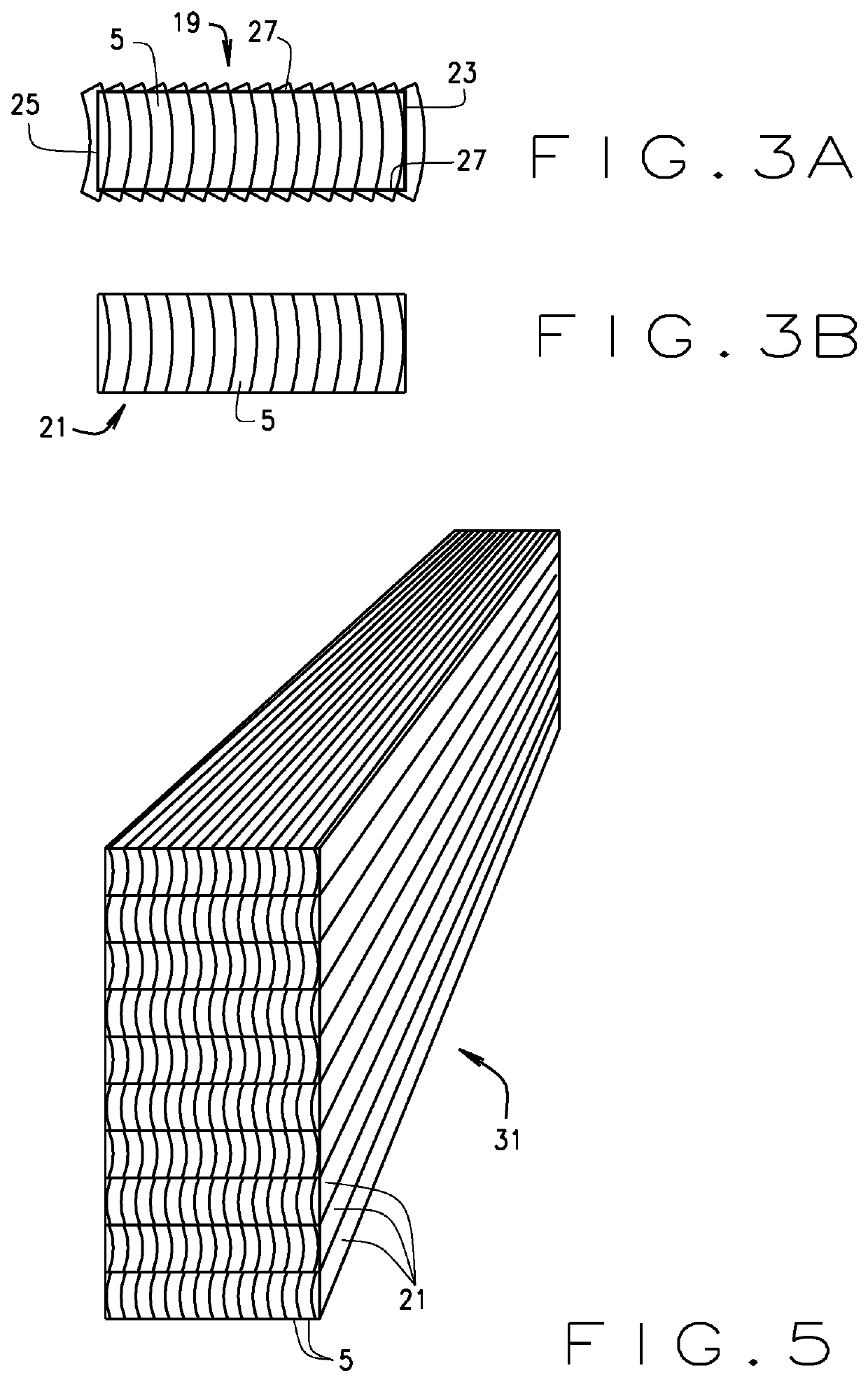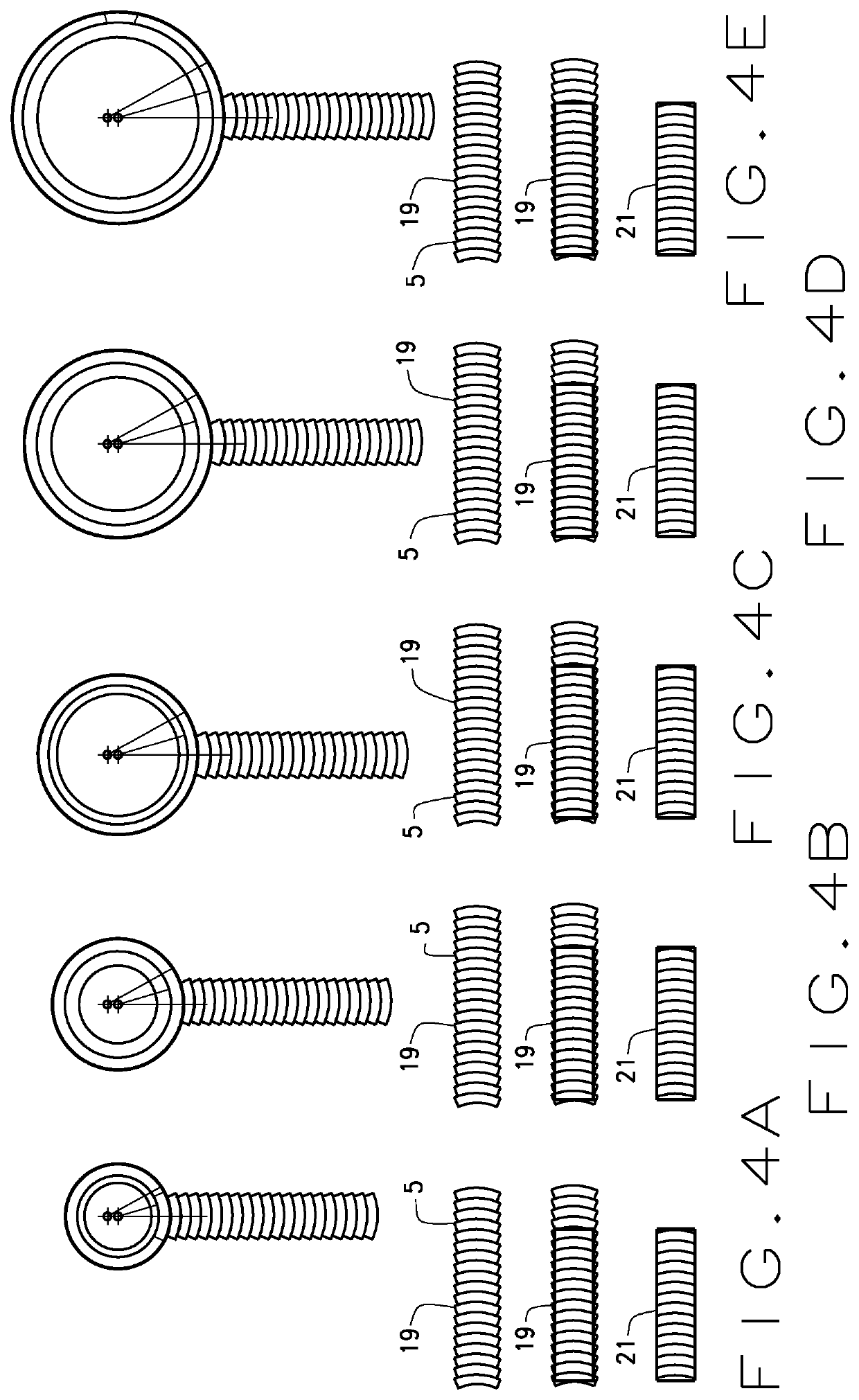Laminated bamboo structural components and panels and methods of forming them
a technology of structural components and bamboo, applied in the field of engineering wood products, can solve the problems of insufficient strength or wastage, and neither method is entirely satisfactory, and achieve the effects of less adhesive, less stress between slats, and strong final produ
- Summary
- Abstract
- Description
- Claims
- Application Information
AI Technical Summary
Benefits of technology
Problems solved by technology
Method used
Image
Examples
Embodiment Construction
[0043]The following description of illustrative embodiments of the invention is by way of illustration and not limitation, the scope of the invention being defined by the claims.
[0044]Referring now to the drawings, and in particular to FIGS. 1 and 2, slats, structural elements, structural panels, and the like of the present invention are formed from culms 1 of bamboo. The culm 1 is illustratively cut at least one foot (30 cm), preferably at least three feet (92 cm) above the bottom of the bamboo plant. The culm 1 is illustratively 8.25 inches (210 mm) in diameter and twenty feet (6 m) long. As shown in FIG. 1, the culm 1 is split or cut into sectors 3 from which slats 5 are formed.
[0045]As shown in FIG. 2 the sector 3 is cut to remove an inner portion of the culm and an outer portion of the culm, with both the inner surface and the outer surface having the same radius of curvature. In this illustrative embodiment the radius is 4″ (102 mm). Each slat 5 illustratively has a thickness ...
PUM
| Property | Measurement | Unit |
|---|---|---|
| widths | aaaaa | aaaaa |
| thick | aaaaa | aaaaa |
| distance | aaaaa | aaaaa |
Abstract
Description
Claims
Application Information
 Login to View More
Login to View More - R&D
- Intellectual Property
- Life Sciences
- Materials
- Tech Scout
- Unparalleled Data Quality
- Higher Quality Content
- 60% Fewer Hallucinations
Browse by: Latest US Patents, China's latest patents, Technical Efficacy Thesaurus, Application Domain, Technology Topic, Popular Technical Reports.
© 2025 PatSnap. All rights reserved.Legal|Privacy policy|Modern Slavery Act Transparency Statement|Sitemap|About US| Contact US: help@patsnap.com



